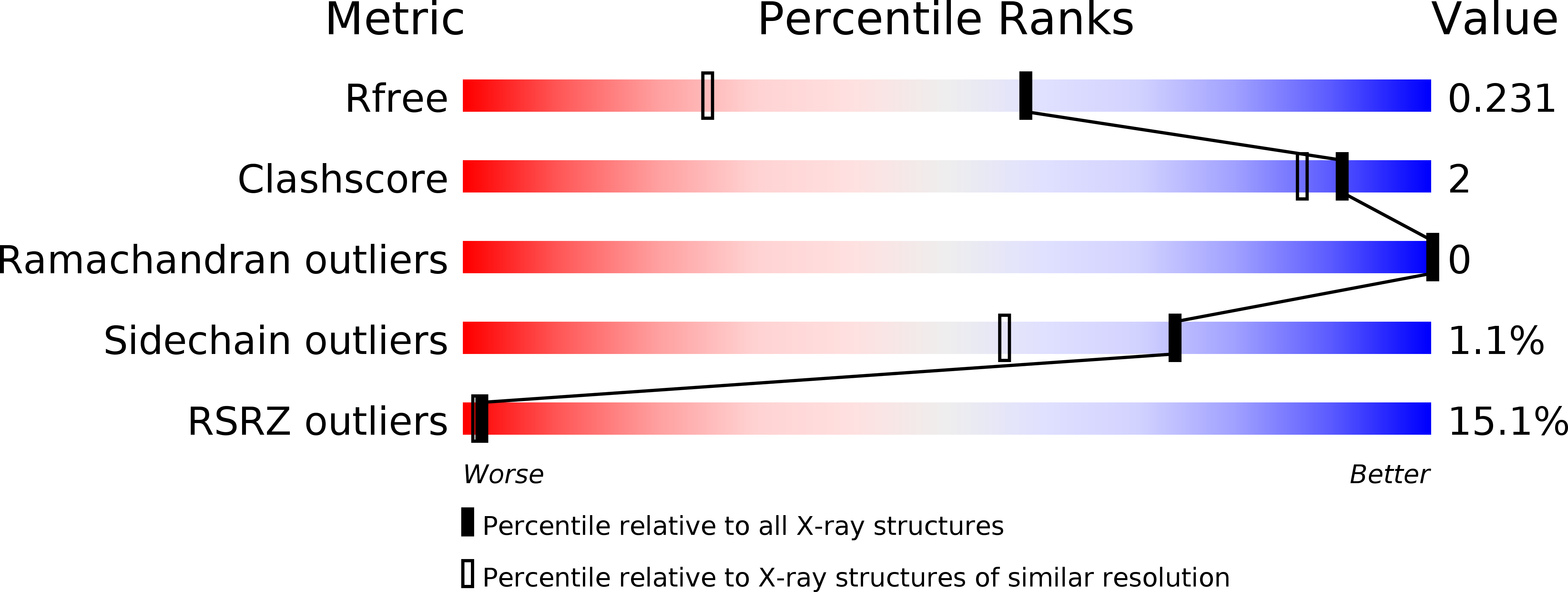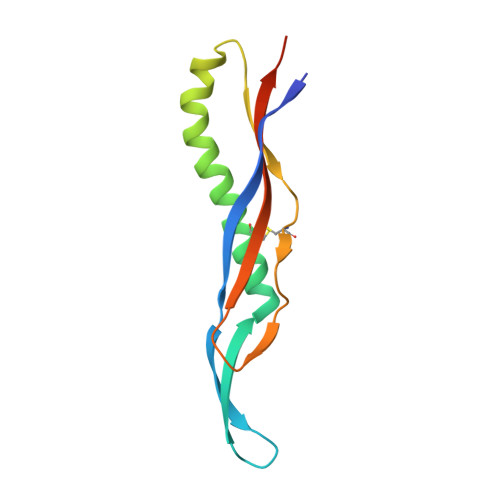Structural and energetic basis of infection by the filamentous bacteriophage IKe.
Jakob, R.P., Geitner, A.J., Weininger, U., Balbach, J., Dobbek, H., Schmid, F.X.(2012) Mol Microbiol 84: 1124-1138
- PubMed: 22591114
- DOI: https://doi.org/10.1111/j.1365-2958.2012.08079.x
- Primary Citation of Related Structures:
4EO0, 4EO1 - PubMed Abstract:
Filamentous phage use the two N-terminal domains of their gene-3-proteins to initiate infection of Escherichia coli. One domain interacts with a pilus, and then the other domain binds to TolA at the cell surface. In phage fd, these two domains are tightly associated with each other, which renders the phage robust but non-infectious, because the TolA binding site is inaccessible. Activation for infection requires partial unfolding, domain disassembly and prolyl isomerization. Phage IKe infects E. coli less efficiently than phage fd. Unlike in phage fd, the pilus- and TolA-binding domains of phage IKe are independent of each other in stability and folding. The site for TolA binding is thus always accessible, but the affinity is very low. The structures of the two domains, analysed by X-ray crystallography and by NMR spectroscopy, revealed a unique fold for the N-pilus-binding domain and a conserved fold for the TolA-binding domain. The absence of an activation mechanism as in phage fd and the low affinity for TolA probably explain the low infectivity of phage IKe. They also explain why, in a previous co-evolution experiment with a mixture of phage fd and phage IKe, all hybrid phage adopted the superior infection mechanism of phage fd.
Organizational Affiliation:
Laboratorium für Biochemie and Bayreuther Zentrum für Molekulare Biowissenschaften, Universität Bayreuth, D-95440 Bayreuth, Germany.














